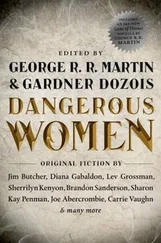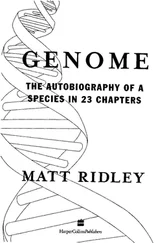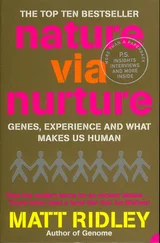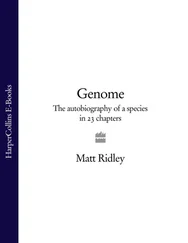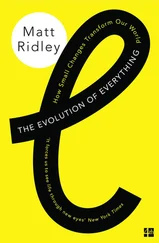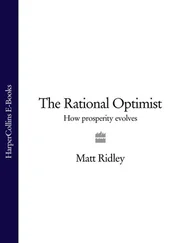The Queen - Matt Ridley
Здесь есть возможность читать онлайн «The Queen - Matt Ridley» весь текст электронной книги совершенно бесплатно (целиком полную версию без сокращений). В некоторых случаях можно слушать аудио, скачать через торрент в формате fb2 и присутствует краткое содержание. Жанр: Старинная литература, на английском языке. Описание произведения, (предисловие) а так же отзывы посетителей доступны на портале библиотеки ЛибКат.
- Название:Matt Ridley
- Автор:
- Жанр:
- Год:неизвестен
- ISBN:нет данных
- Рейтинг книги:4 / 5. Голосов: 1
-
Избранное:Добавить в избранное
- Отзывы:
-
Ваша оценка:
- 80
- 1
- 2
- 3
- 4
- 5
Matt Ridley: краткое содержание, описание и аннотация
Предлагаем к чтению аннотацию, описание, краткое содержание или предисловие (зависит от того, что написал сам автор книги «Matt Ridley»). Если вы не нашли необходимую информацию о книге — напишите в комментариях, мы постараемся отыскать её.
Matt Ridley — читать онлайн бесплатно полную книгу (весь текст) целиком
Ниже представлен текст книги, разбитый по страницам. Система сохранения места последней прочитанной страницы, позволяет с удобством читать онлайн бесплатно книгу «Matt Ridley», без необходимости каждый раз заново искать на чём Вы остановились. Поставьте закладку, и сможете в любой момент перейти на страницу, на которой закончили чтение.
Интервал:
Закладка:
Nonetheless, one of the most startling things to come out of the great studies of the !Kung San people of the Namib desert in the 1960s was the enormous accumulation of local lore that hunter-gatherer people possess—when and where to hunt for each kind of animal, how to read a spoor, where to find each kind of plant food, which kind of food is available after rain, which things are poisonous and which medicinal. Of the !Kung, Melvin Konner wrote, " Their knowledge of wild plants and animals is deep and thorough enough to astonish and inform professional botanists and zoologists: "zo Without this accumulated knowledge it would not have been possible for mankind to develop so rich and varied a diet, for the results of trial-and-error experiments would not have been cumulative but would have had to be relearned every genera-
::: 326 :::
The Red Queen
Lion. We would have been limited to fruit and antelope meat, not daring to try tubers, mushrooms, and the like. The astonishing symbiotic relationship between the African honey guide bird and people, in which the bird leads a man to a bees ' nest and then eats what remains of the honey when he leaves, depends on the fact that people know because they have been told that honey guides lead them to honey. To accumulate and pass on this store of knowledge required a large memory and a large capacity for language. Hence the need for a large brain.
The argument is sound enough, but once more it applies with equal force to every omnivore on the African plains. Baboons must know where to forage at what time and whether to eat cen-tipedes and snakes. Chimpanzees actually seek out a special plant whose leaves can cure them of worm infections, and they have cultural traditions about how to crack nuts: Any animal whose generations overlap and which lives in groups can accumulate a store of knowledge of natural history that is passed on merely by imitation: The explanation fails the test of applying only to humans. 21
THE BABY APE
The humanist might be feeling a little frustrated by this line of argument. After all, we have big brains and we use them: The fact that lions and baboons have small ones and get by does not mean that we are not helped by our brains. We get by rather better than lions and baboons. We have built cities, and they have not: We invented agriculture, and they did not. We colonized ice-age Europe, and they did not. We can live in the desert and the rain
'forest; they are stuck on the savanna. Yet the argument still has considerable force because big brains do not come free. In human beings, 18 percent of the energy that we consume every day is spent in running the brain. That is a mighty costly ornament to stick on top of the body just in case it helps you invent agriculture, just as sex was a mighty costly habit to indulge in merely in case it led to innovation (chapter 2). The human brain is almost as costly an THE INTELLECTUAL CHESS GAME
:::327 :::
invention as sex, which implies that its advantage must be as immediate and as large as sex 's was.
For this reason it is easy to reject the so-called neutral theory of the evolution of intelligence, which has been popularized in 22
recent years mainly by Stephen Jay Gould:
The key to his argu-
ment is the concept of "neoteny "—the retention of juvenile features into adult life: It is a commonplace of human evolution that the transition from Australopithecus to Homo and from Homohabilis to Homo erectus and thence to Homo sapiens all involved prolonging and slowing the development of the body so that it still looked like a baby when it was already mature. The relatively large brain case and small jaw, the slender limbs, the hairless skin, the unrotated big toe, the thin bones, even the external female genitalia—we look like baby apes.2"
The skull of a baby chimpanzee looks much more like the skull of an adult human being than either the skull of an adult chimpanzee or the skull of a baby human being. Turning an ape-man into a man was a simple matter of changing the genes that affect the rate of development of adult characters, so that by the time we stop growing and start breeding, we still look rather like a baby: "Man is born and remains more immature and for a longer period than any other animal, " wrote Ashley Montagu in 1961. 24
The evidence for neoteny is extensive. Human teeth erupt through the jaw in a set order: the first molar at the age of six, compared with three for a chimp. This pattern is a good indication of all sorts of other things because the teeth must come at just the right moment relative to the growth of the jaw. Holly Smith, an anthropologist at the University of Michigan, found in twenty-one species of primate a close correlation between the age at which the first molar erupted and body weight, length of gestation, age at weaning, birth interval, sexual maturity, life span, and especially brain size: Because she knew the brain size of fossil hominids, she was able to predict that Lucy would have erupted her first molar at three and lived to forty, much like chimpanzees, whereas the average Homoerectus would have erupted his at nearly five and lived to fifty-two: 2'
::: 328 :::
The Red Queen
Neoteny is not confined to man. It is also a characteristic of several kinds of domestic animals, especially dogs: Some dogs are sexually mature when they are still stuck in an early phase of wolf development: They have short snouts, floppy ears, and the sort of behavior that wolf pups show—retrieving for example: Other, such as sheepdogs, are stuck at a different phase: longer snouts, half-cocked ears, and chasing: Still others, such as German shep-herds, have the full range of wolf hunting and attacking behaviors plus long snouts and cocked ears:'
But whereas dogs are truly neotenic, breeding at a young age and looking like wolf puppies, humans are peculiar: They look like infant apes, true, but they breed at an advanced age. The combination of a slow change in the shape of their head and a long period of youthfulness means that as adults they have astonishingly large brains for an ape: Indeed, the mechanism by which ape-men turned into men was clearly a genetic switch that simply slowed the developmental clock: Stephen Jay Gould argues that rather than seek an adaptive explanation of features like language, perhaps we should simply regard them as "accidental, " though useful, by-products of neoteny 's achievement of large brain size: If something as spectacular as language can be the product of simply a large brain plus culture, then there need be no specific explanation of why larger brains are required because their advantages are obvious!'
The argument is based on a false premise. As Chomsky and others have amply demonstrated, language is one of the most highly designed capabilities imaginable, and far from being a by-product of a big brain, it is a mechanism with a very specific pattern that develops in children without instruction: It also has obvious evolutionary advantages, as a moment 's reflection will reveal: Without, for example, the trick of recursion (subordinate phrases) it becomes impossible to tell even the simplest story. In the words of Steve Pinker and Paul Bloom, "It makes a big difference whether a far-off region is reached by taking the trail that is in front of the large tree or the trail that the large tree is in front of: It makes a difference whether that region has animals that you can eat or animals that can eat you: " Recursion could easily have helped a Pleis-THE INTELLECTUAL CHESS GAME
::: 329:::
tocene man survive or breed: Language, conclude Pinker and Bloom,
Читать дальшеИнтервал:
Закладка:
Похожие книги на «Matt Ridley»
Представляем Вашему вниманию похожие книги на «Matt Ridley» списком для выбора. Мы отобрали схожую по названию и смыслу литературу в надежде предоставить читателям больше вариантов отыскать новые, интересные, ещё непрочитанные произведения.
Обсуждение, отзывы о книге «Matt Ridley» и просто собственные мнения читателей. Оставьте ваши комментарии, напишите, что Вы думаете о произведении, его смысле или главных героях. Укажите что конкретно понравилось, а что нет, и почему Вы так считаете.

